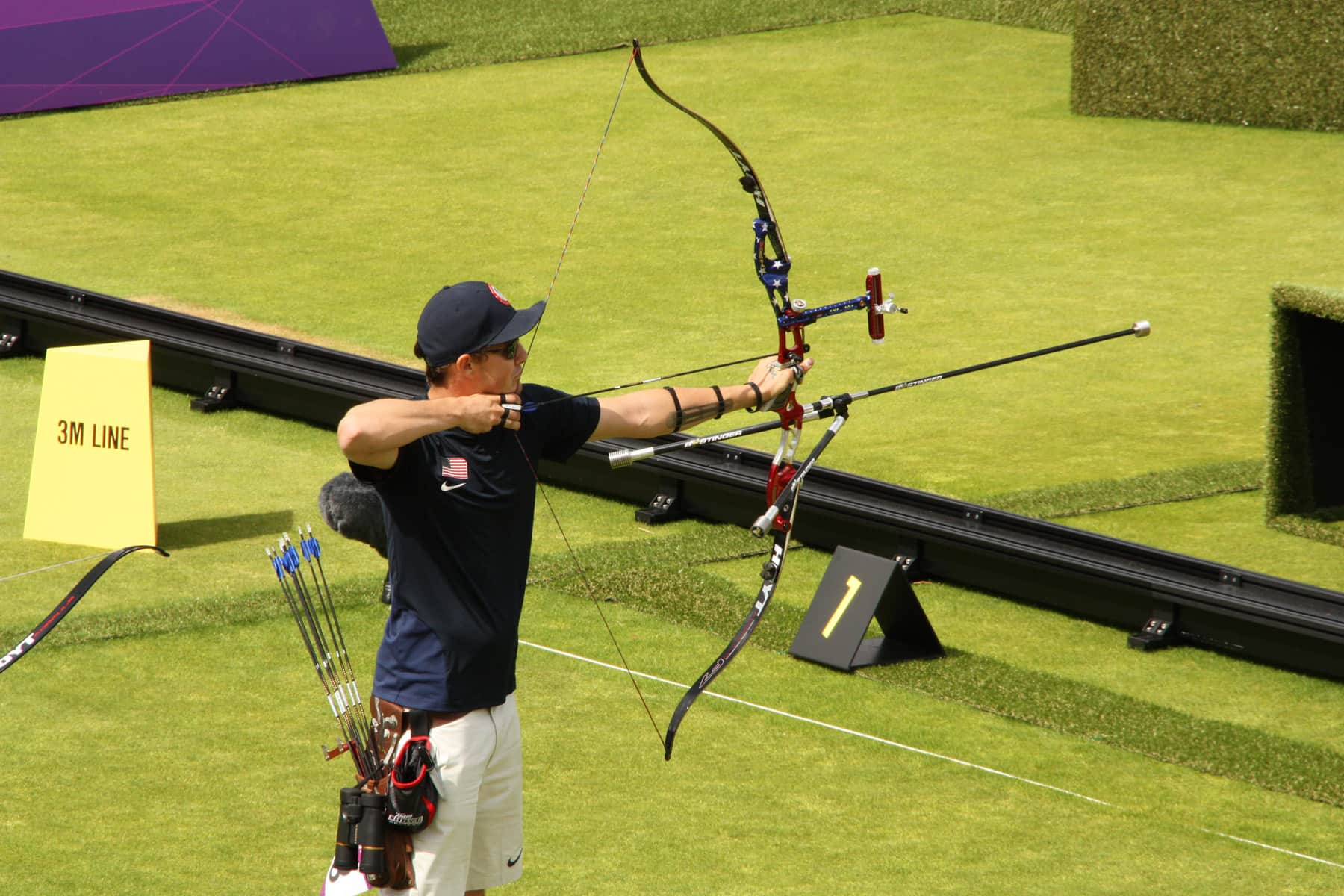The Boring Side of Archery: Bows, Arrows and Judges
Archery Trade Association 08.02.12

As Janet and I wander through our hotel lobby, we often notice people wearing the blue and green of Olympic officials going about their business from early in the day to late in the evening. I learned they are the archery judges, spotters, referees, equipment technicians and venue announcers. They coordinate the inspection of the competitors’ equipment, and mediate rules issues, manage hundreds of matches, and generally deal with minutiae that would drive most people crazy. However, they’re critical to the success of Olympic archery competition.
Before arriving in London, I knew Olympic archers used recurve bows, which many of my bowhunting friends and I agreed (who hunt with compound bows) are not REAL bows. REAL bows have pulleys, cams, cables and substantial let-off, as well as internal mechanics and vibration-dampening systems so shooters can minimize practice and maximize hunting time. After all, technological advances are embraced in most sports, and increase the excitement and appreciation for the difficult skills required.
But I’m here to tell you we’ve been wrong. Very wrong. There’s an elegance to the simple, yet sophisticated, design of recurve bows. By using recurves, Olympic archery becomes a pure game with only a few simple rules for judges to enforce. There’s no complicated regulations about let-off, sights, rests, releases, arrows and all the other equipment that divides and segregates archers into endless arrays of competition categories. In the Olympics, every bow is a recurve, which is defined this way: “An instrument (interesting they don’t call it equipment) consisting of a handle (grip) that is part of the riser (the bow’s midsection) and two flexible limbs, each ending in a tip where the string is nocked. The bowstring runs directly between the two string nocks and, when the bow is held in one hand by its handle, the fingers of the other hand draw and release the string.”
That’s it. Simple and clean. That’s archery of the bare-bones type, for sure.
Most other rules ensure the archer gets no help in aiming, and thus the archer’s sight can’t have more than one sighting point. There’s no magnification, no prisms, no electronics and no leveling devices. The judges must be sure the sight allows wind and elevation adjustments, but nothing more. In addition, nothing on the bowstring can assist aiming. The bowstring serving (threads wrapped around the center of the bowstring where the arrow is nocked and fingers placed to draw the bow) can’t be wrapped in a way to give the archer a rear point to line up the sight.
Arrows basically must be, well, arrows: a tip, nock, fletching and a shaft with a maximum diameter. Fletching of any kind and type can be used. Most archers use Mylar attached with double-sided tape. Mylar is interesting because it’s basically a thin plastic sheet, almost a film, which means archers use the lightest material they can find to guide the arrow’s flight. All arrows must look the same and be marked with the athlete’s name. Arrows fit the design of recurve bows in their simplicity and fly true more than 70 meters in all weather conditions.

More about the judges: Archery judges are kind of a combination of ushers and referees. They lead the athletes on and off the range, manage introductions and all the shooting, and watch to ensure no archer violates the rules. The rules include where the archers must stand relative to the waiting line (where they wait to shoot), when they can be on the shooting line, when they can pull and nock an arrow, and how quickly they must shoot. As with many sports, the best archery judges aren’t noticed because the match goes smoothly and without incident.
Judges who function like referees can’t have much interest in the competition. I say that because they must sit behind the target buttresses as the archers shoot, and emerge only to determine the position of arrows near the target’s scoring lines. These officials are sort of an inspection squad: They file out quickly, huddle around the target, study the arrows, and occasionally use a magnifying device to see if the shaft pierced a line. Then they talk some more and finally radio their ruling to the scorekeepers. Then they pull the arrows, hand them to an arrow holder (arrow retrievers function like ball boys in tennis) and file quietly back out of sight. I found myself hoping they had a TV back there so they could at least watch the competition.
As with most judges and referees, their thankless job is only discussed when they err. Over the years, one judge or another caused a stir at a major event, which every aficionado recalls with clarity (like all sports fans).
So far at the London Olympics, the judges have quietly and expertly done their jobs.
This blog is republished with permission from the Archery Trade Association. To read Jay’s updates from London in real time, follow the Archery Trade Association’s blog here.

